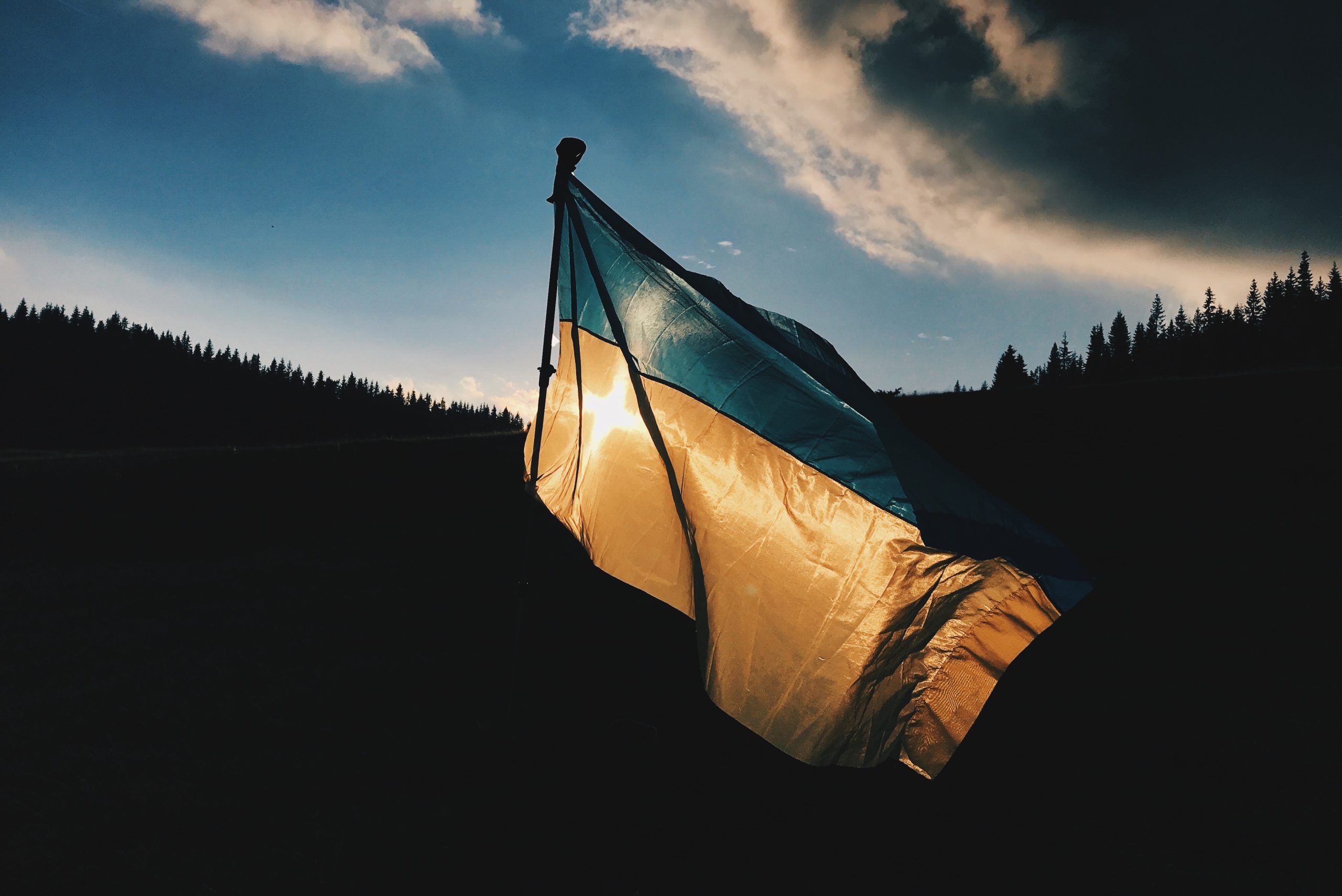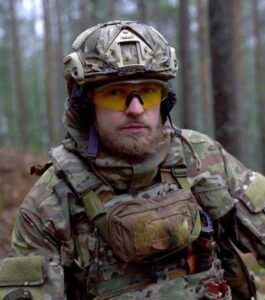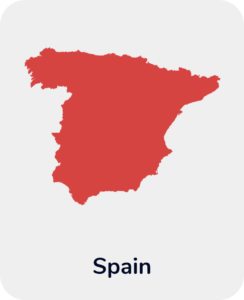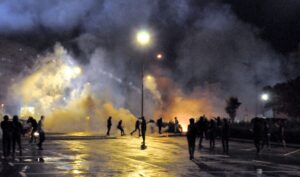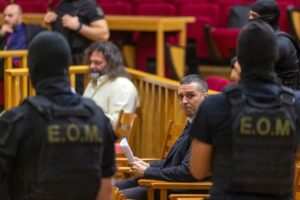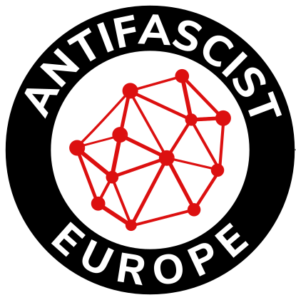The original publication under the headline “Die Ukrainefrage spaltet” was published in the German antifascist magazine Der Rechte Rand, November/December 2021, pages 46-47. Translated by the Antifascist Europe team with the consent of the magazine’s editors.
The author of the text is Alexander Tushkin, a Russian antifascist, and journalist who is a visiting researcher at HWR Berlin. He is a fellow of The International Research Group on Authoritarianism and Counter-Strategies (IRGAC).

In the autumn of 2020, Nazi skinhead Andrei Ded received a note from his partner in prison: “Urgently flee the country!” He sells his business and flees to Ukraine with his wife, two children, and a dog. The note’s author dies in prison under strange circumstances. In February 2022, a war broke out. Ded finds himself on the side of Ukraine, while his associate and business partner becomes a propagandist on the side of Russia.
Before his death in prison, Russia’s leading Nazi skinhead, Maxim “Tesak” Martsinkevich, testified that Ded might have been involved in three murders. Ded is facing a life sentence in his homeland, so now he is recording a video from Kyiv on his Instagram as he “fights the good fight.” Ded’s business, a tattoo parlor in a hipster quarter in Moscow, is still running despite protests from antifascists. Ded’s friend Gleb Ervier, a former tattoo parlor director with Nazi tattoos on his head, has become a war correspondent for a state news agency. He is now recording a video from Donbas about how Russia fights fascism.
This cinematic plot best describes the state of the far-right movement in Russia: betrayal, splits, total polarisation of positions, loss of previous ideological reference points, and inclusion in the state discourse. The once powerful movement, once seemingly unified in its monolithic hatred of others, has forever split over the issue of Ukraine.
The far-right split
The events of 2014 – Euromaidan and the subsequent armed hostilities in south-east Ukraine – led to a division among the Russian far-right. The imperialists supported the self-proclaimed republics of Donbas and Lugansk, while their former associates, the Nazis, supported Ukraine. This phenomenon among the Russian far-right has been dubbed the “Great Divide.”
For the imperialists and Russian nationalists, the war embodies the concept of a triune Russian people – Velikorossians (Russians), Little Russians (Ukrainians), and Belarusians. Thus, in 2014, a militia in Donbas was led by former FSB officer Igor Girkin (Strelkov), who had fought in Transnistria and Bosnia, where he was nicknamed “Tsarist officer” by the Serbs for his monarchist views and manners.
For opposition nationalists, who are in the clear minority, the war appears to be “fratricidal” (“Slavs are killing Slavs”). Opponents of the war include Vladimir Basmanov’s Nationalist Movement and Andrei Saveliev’s Great Russia, who believe that Putin is acting under instructions from the West and that the war will hasten the extinction of the Russians. At the same time, the authorities repopulate Russia with migrants from Central Asia and the Caucasus. Also, opposition nationalists do not accept Putin in power because they see him as a “bloody Bolshevik” who destroyed the nationalist movement in Russia and killed Tesak, who became the Russian Horst Wessel.
The opposition includes Hitler fans who fled to Ukraine and ended up on the other side of the front. In 2014, the former leader of the Russian National Socialist Society, Sergey “Botsman” Korotkikh, found himself on the Ukrainian side in a volunteer battalion. He received a Ukrainian passport personally from former president Petro Poroshenko. Along with him, Hitlerists from Russia defected to Ukraine: former Wagner fighter and close friend of Tesak Artem “Uragan” Krasnolutskiy, leader of Wotan Jugend, NSBM band M8l8th frontman Alexey Levkin and Nazi businessman Denis WhiteRex Kapustin. According to the Antifascist Europe monitoring project, he organized Russian Nazis in Ukraine in August 2022 and set up the Russian Volunteer Corps.
The figures of Strelkov and Korotkikh represent two up-to-date poles within the Russian far-right that stretch the movement from total support for the war to total rejection of it, up to and including participation in military actions on the side of their enemy.
Supporters of the war
In 2022 the Russian far-right was a pitiful spectacle. A dozen or so tiny organizations were routinely harassing migrants and feminists on the internet, putting up stickers against vaccination, and publishing books about “heroes of the white race.” After February 24, the far-right, like the rest of the country, completely switched their attention to the war in Ukraine, and other topics disappeared from the information field.
The war was supported by pro-government nationalists from Orthodox businessman Konstantin Malofeyev’s Tsargrad, Conservative politician Sergei Baburin’s Russian People’s Union (ROS), Oleg Kassin’s People’s Council, and even such opposition imperialists as Stanislav Vorobyov’s Russian Imperial Movement and its combat wing Imperial Legion led by Denis Gariyev, E. V. Limonov, Sergey Zaitsev and Igor Sobolev’s Right Russia, Andrey Rodionov’s Russian-Slavic Union and Revival (RUSOV), Ivan Otrakovsky’s Army of Fatherland Defenders, as well as opposition National Democrats – the remnants of the National Democratic Party and Dmitry Bastakov’s Black Hundred. Also supporting the war are ideologues Vladislav Pozdnyakov (Male State), publicist Yegor Kholmogorov, philosopher Alexander Dugin, and Colonel Vladimir Kvachkov.
There are also those in the far-right who supported the war but actively criticize Putin and the country’s leadership for employing methods of warfare deemed too lenient and half-measures, overseeing a mediocre command, surrendering conquered territories as a result of “treaties” and attempting peace negotiations with Kyiv. First, there were Strelkov, Vorobiev, Kvachkov, Pozdnyakov, Rodionov, and Otrakovsky. Some took an intermediate position: the new right-wing Roman Yuneman’s Society, Future movement, and Mikhail Ochkin and Valentina Bobrova’s Conservative movement. On the one hand, they call what is happening a fratricidal war; on the other, they constantly repeat that it should have started in 2014.
Also on Russia’s side since 2014 are the monarchist Imperial Legion and open Nazis in the group Rusich, whose symbol is the Russian swastika kolovrat. Rusich members are listed as employees of the private military company Wagner, which ideologically gravitates towards a far-right discourse. Rusich Nazis see no problem with Russia waging war against fascism under red flags and restoring Lenin monuments in Ukraine. The head of Chechnya, Ramzan Kadyrov, and his Chechen units in the neighboring trenches also cause the Russian far-right no problems, as Kadyrov acts as the voice of the “war party,” which demands a “final solution to the Ukrainian question.”
Far-right reactions to the war
Even before the partial mobilization was announced on 21 September, some organizations began sending their supporters to the front as part of volunteer units, like Strelkov and Kvachkov. According to the Sova monitoring center, we are currently talking about several dozen radicals at the front. Still, behind each of them is an affinity group of hundreds of supporters who support their fighters for ideological reasons.
Most of the far-right has become involved in raising money among their social media followers to buy missing equipment – night-vision devices, drones, medical supplies, and even combat vehicles. Russian nationalists are no different from Ukrainian nationalists, and even compete with them to see who can raise the most money. The most telling example is that of the young book publisher Dmitry Bastrakov, who organized crowdfunding, raising 22 million rubles (more than 360 thousand euros), created the war propaganda project, which produced texts and multimedia materials, and then went to fight at the front himself.
The nationalists naturally failed to garner international support, which went entirely to Ukraine. In this sense, only the Russian Imperial Movement, which engages in propaganda among the Western Slavic peoples, and RUSOV, whose banners can be found in the Balkans, have been successful. However, the radicals there limited themselves to symbolic support. In Ukraine, Antifascist Europe counted several dozen far-right activists from various countries in the ranks of the Foreign Legion.
Antifascist Europe also drew attention to a new phenomenon among the Russian far-right: they became war correspondents and went to the front. Under conditions of war, correspondents become opinion leaders for society, so the far-right can easily use the situation to promote their discourse. Far-right journalists in Russia are not shy about their views and often openly declare this, emphasizing their status as “far-right specialists.” “And since someone has taken it upon themselves to award me expertise on Nazism, here is my expert opinion – in Ukraine, we are not dealing with innocent nationalism and the struggle for independence. Europe, directly and indirectly, seasoned with regional features, is breeding a new Reich for itself and for the whole world. And it has to be fought,” wrote Gleb Ervier.
Ideological projects are crucial for the far-right, which builds its discourse on top of state Z-propaganda, amplifying the voice of the “war party” and hatred of the enemy. The far-right is dehumanizing Ukrainians, using internet memes, specific metaphors, and images in their work. Hate speech strips Ukrainians of their human image and turns them into animals to be exterminated: “hohols” and “ukrops”, “ukronazists” and “ukrofashists”, “piglets” and “pigs.” The far-right spread their propaganda on social networks and the messenger Telegram, which has effectively become a second front. Thus a small team of nationalists called Local Crew cynically combined fashionable internet slang with Russian nationalism and now regularly produce podcasts about “depigization”, pictures-memes about pigs, music videos, and “What kind of pig are you” tests. Characteristically, the same thing is happening in Ukraine. Only the words in the hate speech change: “orcs” and “pigdogs,” “Russians,” “katsapi,” “Moskals.” And the longer the war goes on, the deeper both societies sink into the abyss of ethnic hatred.
